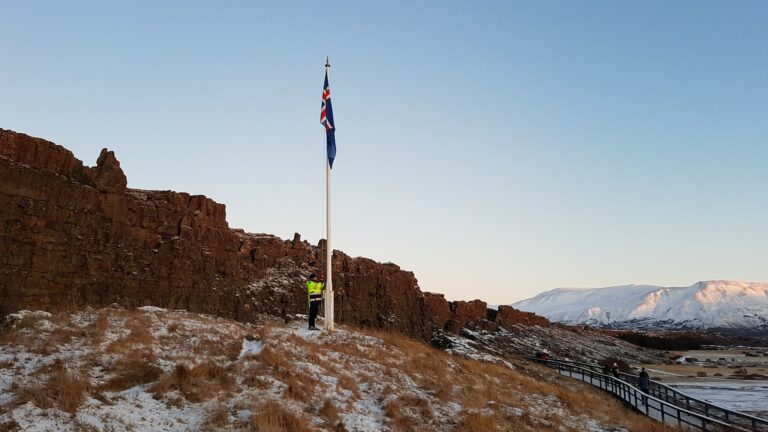Norsemen & Vikings
About Our Travel Guide to Norsemen & Vikings
This is not a history of the Vikings, rather, it is a travel guide to the many and varied sites, landmarks, towns and museums associated with the Norsemen and Vikings, and collections of their artefacts on display. Whether you want to visit a few of the more spectacular sites or are planning a more extensive trip to a specific region, you are sure to find what you need here. From recommendations for the best sites and museums to visit to tools to create your own itinerary and travel lists. As well as many other resources, travel tips and ideas. The guide is primarily produced by Thomas Dowson, an archaeologist and the founder of Archaeology Travel, along with contributions by other authors and researchers on this website. Read more about the authors and this website, as well as our mission and vision.
Vikings or Norsemen?
The Norsemen were the group of people who inhabited Scandinavia (modern-day Norway, Sweden and Denmark) during the Viking Age. This is a period that starts in the late 8th century AD and ends in the mid 11th century. Today they are commonly referred to as Vikings, but this term is somewhat misleading.
The Old Norse word “víkingr” originally meant a person who goes on expeditions and raids, often overseas. The term ‘Viking’ emerged in modern English during the 18th-19th centuries and was popularized as a blanket term for those who raided and traded from Scandinavia during the Viking Age. Norse people did not refer to themselves as Vikings. Rather, they used terms like ‘Norseman’, ‘Northman’, or ‘Dane’.
Norsemen, as a more encompassing term, refers to all the Germanic peoples who spoke Old Norse and inhabited Scandinavia during the Viking Age, whether they raided other lands or not. Norse society and culture extended beyond raiding and warfare. The Norse had a rich literary tradition, mythology, art, and poetry. They were also traders, merchants, farmers, and skilled craftsmen.
Viking has come to refer to seafaring raiders from Nordic regions, while Norsemen refers to the broader Scandinavian culture and people during that historical period.
Must See Viking Sites
Jelling Viking Monuments
The group of Viking monuments in the town of Jelling make up one of the most important historic sites in Denmark. Created in the mid 10th century AD, the monuments are some of the most striking examples of Pagan Nordic culture. They include two flat topped mounds at 11 m high, the church, two runic stones, all enclosed by a palisade almost 1.5 km long. The two stones were erected by King Gorm and his son Harald Bluetooth. The smaller of the two, by Gorm, is the first recorded mention of ‘Denmark’, while the second, by Harald, records the Christianisation of Denmark. The mounds are the largest known Viking mounds, one of which is thought to have been King Gorm’s burial mound.

Lindholm Høje
In the 12th century, drifting sands covered the hillside, thereby protecting one of Denmark’s remarkable Iron Age sites. Excavated in the 1950s, archaeologists uncovered a burial site that has close on 700 graves. A few are ordinary interment graves, the majority are cremation graves. The stones we see today are arranged in a ship-shape, as well as oval and triangular arrangements. These burials range from 400 AD to just before 1000 AD. Also found were the remains of two villages, or the same village at two different times, related to the final phase of burial and afterwards. A newly ploughed field was also excavated, providing evidence for a new plough during the Viking period.

The Settlement Exhibition, Reykjavik
In 2001 workers digging in Reykjavik city centre came across the remains of a Viking longhouse dating to the 10th century. Later excavations revealed that the building was on top of an earlier structure dated to 871 ±2 AD – making this the oldest evidence of human habitation on the island. The remarkable find has been preserved in situ, and an extraordinary multimedia exhibition using state-of-the-art interactive technologies suitable for people of all ages reveals the world of Iceland’s earliest settlers.

Alþing – Iceland’s First Parliament
In 930 AD the Vikings established an open-air assembly or parliament, making this the world’s oldest Parliament. The assembly continued to meet here until 1798, before relocating to Reykjavik in 1844. Around the Althing archaeologists have found the remains of human habitation from the 10th to the 19th century. Not only is Þingvellir a protected national site, it is situated with in the Þingvellir National Park, part of which is a listed UNESCO World Heritage Site (2004), in recognition of its archaeological and geological importance.

L'Anse-aux-Meadows
Situated at the very tip of Newfoundland are the remains of wooden-framed peat and turf buildings. Similar to those found on Greenland and Iceland, they are generally accepted to have been made by Norse Vikings in the 11th century. L’Anse-aux-Meadows is now accepted to be the only known Norse settlement in North America, making this the earliest known archaeological evidence for a European presence on the continent. Parks Canada manage the site and visitors’ centre, with reconstructions and exhibitions about the discovery and excavation of the site.












